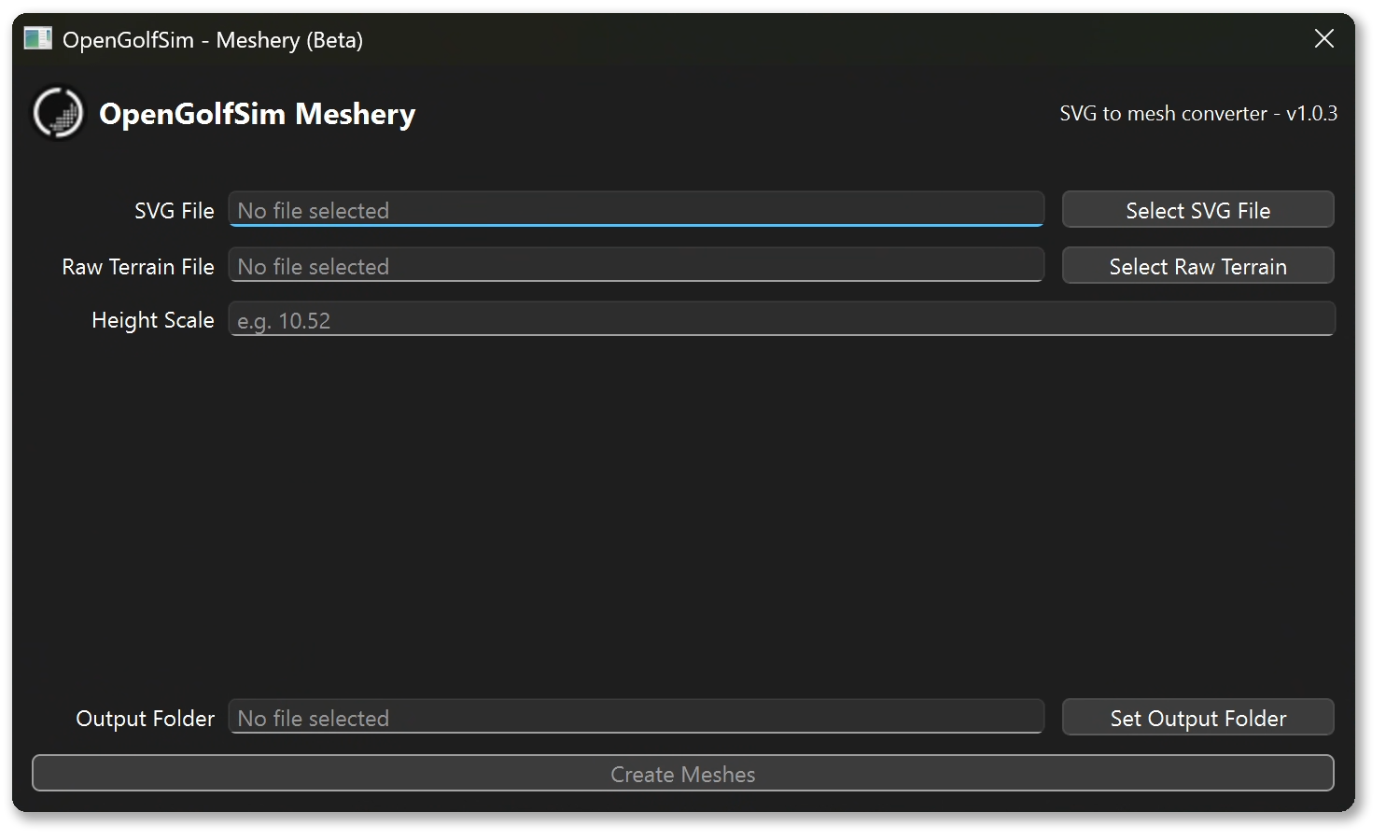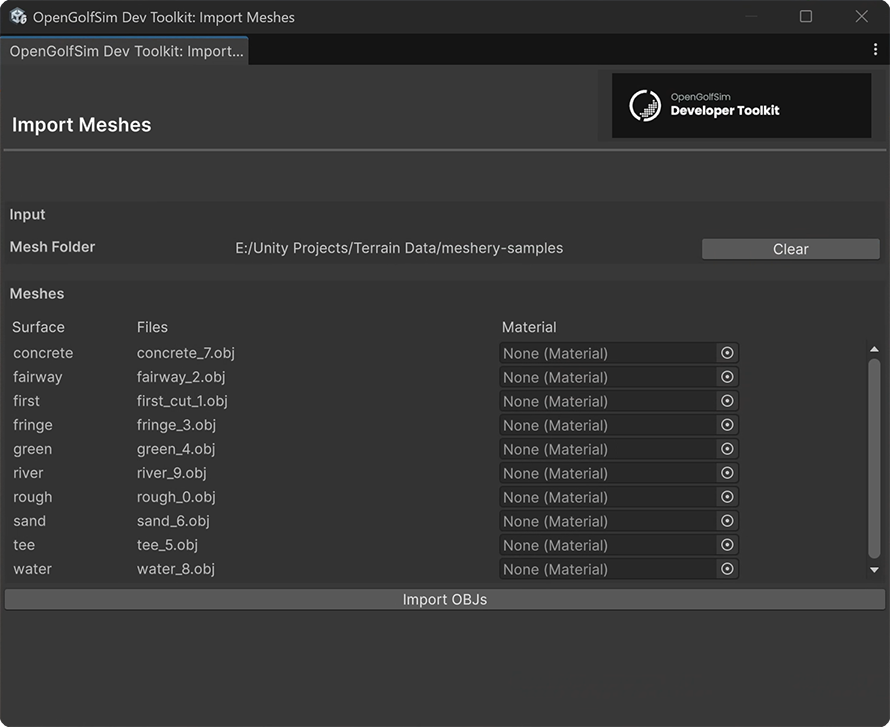Course Meshes
To create separate playable surfaces, like fairways and greens. We need to convert the basic shapes we drew in Inkscape into 3D objects that are sloped to match our terrain.
Creating Meshes
-
Open the Course Meshery tool.
-
Click the Select SVG File button and locate the SVG file you created in the Course Map step.
-
Click the Select RAW Terrain button and locate the raw terrain data file you created in the Course Terrain step.
-
Set the Height Scale value to the same thing as your Terrain Height in Unity.
To find the terrain height
-
Click the terrain object in your scene.
-
Click the Terrain Settings tab in the Inspector on the right.
-
Scroll down to your Terrain Size section and you should see Terrain Height
-
-
Set Output Folder to the location you want the course folder to be generated. When the job completes, there will be a new unique folder created at this location.
Import Meshes Into Unity
Next you’ll want to import the folder of meshes into your Unity project. These meshes will sit just above your terrain layer. Make sure you’re using the project template and have the OpenGolfSim Developer Toolkit package, which should include a tool for importing and batch assigning base materials to your meshes.
-
In your Unity project, go to Tools > OpenGolfSim > Import Meshes
-
Click the Select Folder button and locate the folder on your computer that was created by the Course Meshery tool.
-
At this point you can batch assign materials like grass and sand to your course surfaces.
-
Click the Import OBJs button and wait for the script to automatically import the course meshes to your scene. This step could take quite a while, depending on the size of your course.
-
Once the task finishes, you should see a new parent game object with the name of your folder.
-
You’ll likely need to reposition the parent game object over the terrain by offsetting the X or Z value by the terrain size, as well as adjusting the Y position to be above the terrain.

